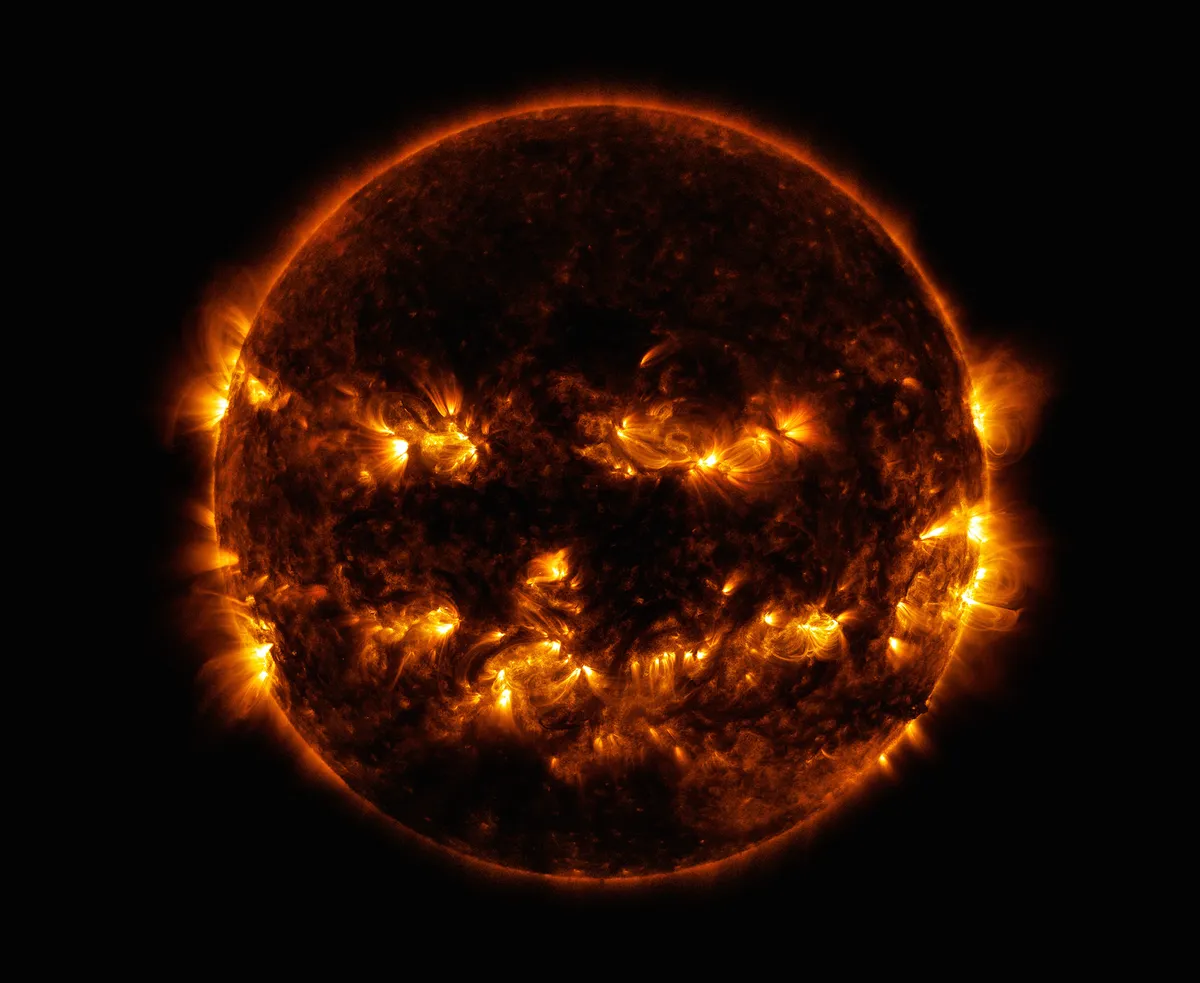This wolf-like silhouette of dark cosmic dust is known, fittingly, as the Dark Wolf Nebula, and is seen here in a newly released image just in time for Halloween.
The Dark Wolf Nebula is found in the constellation Scorpius and located 5,300 lightyears from Earth.
From our perspective on Earth, the nebula takes up the same size in the sky as four full Moons.
More creepy cosmos content

And it's part of an even larger nebula called Gum 55.
This view of the nebula was captured in a 283-million-pixel image by the VLT Survey Telescope at the European Southern Observatory's Paranal Observatory in Chile.

Dark nebulae explained
It was once thought that patches of blackness in the sky were simply regions devoid of stars.
But in actual fact, these objects are dark nebulae: huge clouds of thick cosmic dust that block out light from distant stars.
Dark nebulae can't be seen in visible light, as the dust within them only lets through radiation at longer wavelengths like infrared.

However, these apparently dark and lifeless objects actually contain the ingredients for new stars to form, so astronomers are interested in studying them in search of new stars in the making.
The colourful clouds in the background of this image are made of mostly hydrogen gas, glowing as a result of intense radiation emanating from newborn stars within.
What are your favourite dark nebulae? Let us know by emailing contactus@skyatnightmagazine.com

